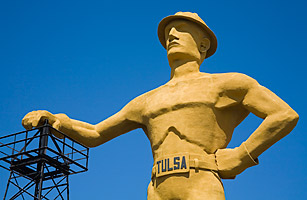
From My Files Friday: Four years ago, I posted this blog about the first time that I went inside a prison in the early 1970s and saw inmates with mental illnesses. Sadly, the number of prisoners will mental disorders has skyrocketed since then and what I observed in Oklahoma nearly four decades ago remains an all too familiar sight.
The Public Cared More About A Trapped Cat Than Ill Inmates, March 14, 2010
The first time I went into a prison as a reporter was in the early 1970s when I worked at the now closed Tulsa Tribune. The city editor, Windsor Ridenour, sent me to the Oklahoma State Penitentiary in McAlester to cover a pardon and parole board meeting.
I suspect Windsor wanted me to see a tougher slice of life from what I had experienced as the son of a minister, but I doubt he had any idea how that trip would ultimately impact my life. My visit into the white knuckle hell that is McAlester ultimately caused me to write The Hot House: Life Inside Leavenworth Prison, which recounts a year that I spent inside a maximum security penitentiary.
It was in McAlester that I first saw how inmates with mental illness were being warehoused. Prison doctors shot them with Thorazine that reduced them to drooling zombies who rarely left their bunks.
I was so disgusted I wrote an expose that I believed would outrage the public and prompt reforms. But my expose was greeted by silence. There was no community anger, no letters to the editors, not a single reaction from an elected official.
Shortly after my expose was published, a cat crawled through a hole into a warm spot seeking shelter. What the cat didn’t realize was that she had taken refuge inside a hollow portion of a state landmark called The Golden Driller. It was erected in 1953 to commemorated the importance that oil played in the state. The statue was such a hit that a larger permanent one built from iron and concrete was put into place in 1966. Reputed to be the largest free-standing statue in the world, the Golden Driller is 76 feet tall.
Of course, the cat didn’t know any of this history when it crawled through a hole in the Golden Driller’s base. A workman happen to seal that hole and when a passerby heard the cat meowing inside, she called The Tulsa Tribune and I was sent to investigate.
My story about the trapped cat caused all hell to break loose. Crowds gathered at the statue. A radio station did a play-by-play broadcast when firemen arrived to free the cat. Syndicated commentator Paul Harvey telephoned for an update. There were cheers when the cat was rescued.
For a young reporter, the contrast was shocking. I had written passionately about human suffering in prison and no one had blinked. Yet, a trapped cat commanded national attention. Clearly, the public felt pity for the cat because it was innocent. Those inmates were not.
I know that having a mental illness does not give someone a free pass but the majority of prisoners with mental illnesses who I saw in McAlester and thirty years later on the ninth floor of the Miami Dade County jail were not hardened convicts. They were men with severe mental illnesses who needed treatment, not punishment.
Why does there continue to be little sympathy for persons with mental disorders who are in jail and prisons?
Fear and ignorance.
If we acknowledge that many of these men got into trouble because of a mental disorder that was beyond their control, it would be much harder for us to go to sleep at night. Blaming them absolves us of our responsibility to help.
It shouldn’t. We should care as much about them as we do a trapped cat. Even more.



